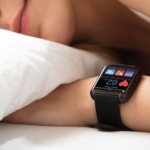Augmented reality and virtual interactive technology may provide benefits in the operating room, although smart glasses in development by other manufacturers presently have wider viewing angles more suitable for augmented reality than Glass. In live surgical telemonitoring, the surgeons in the operating room would be able to see the hands of the remote surgeon to facilitate intraoperative surgical planning. There is also a possibility that smart glasses may replace today’s expensive navigation equipment.
Caution Required
It’s tempting to say that Google Glass and related technologies will usher in a new era in healthcare, but it’s important to note that presently available studies of Glass have not borne out this optimism. A review of published articles in PubMed and Web of Science revealed five papers evaluating Glass in a clinical setting. They concluded that although Glass might be an adequate tool for education, deployment in clinical care requires improvements in the hardware.10-14 In one of the few published interventional studies using Glass, a forensic examination conducted using Glass produced noticeably worse images while taking more time than standard methods—not exactly the strongest endorsement of the technology in its existing form.12 This failure is important to note because it would have been easily missed if key outcomes weren’t strictly measured and compared.
The video camera and Internet connection present a possibility for misuse, and the risk alone may cause negative reactions. Before the introduction of Glass in healthcare, it’s important to have a discussion about ethics and etiquette to determine the appropriate balance of patient privacy, patient care and medical education, especially for use cases involving video streaming.
Glass can aid with information retrieval & synthesis if linked to the electronic health record (EHR).
It’s likely that not all patients will be ready to be examined by a doctor wearing Glass. At all sites where Glass is deployed clinically, educating patients adequately about how the device is being used by the physician has been a key component to successful deployment.
Smart glasses also present the risk of distraction of medical professionals when full attention and motor skills are required, like in the operating room, and the device may also have a negative effect on the personal eye-to-eye contact with the patient.
While medical professionals are eager to conduct “pilots” of Glass, it’s important that this does not come at the cost of neglecting studies of Glass and similar devices. It may turn out that failures of Glass to improve healthcare are a direct result of the technology not being fully mature. However, unless relevant outcomes are systematically measured by those piloting Glass in healthcare, we will never be able to tell apart our successes and our failures.
